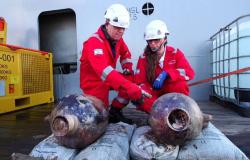JERUSALEM — In the two years he was in Rafah, between 2005 and 2007, General Pietro Pistolese saw a million Palestinians pass through the Egyptian border crossing. The general now on leave still remembers two people in particular from that human river: a woman who hid small crocodiles under her coat and Ismail Haniyeh.
The mayor of Rafah: “From a tent I coordinate the little remaining aid. Help us stop the massacre”
by our correspondent Fabio Tonacci
30 May 2024
Pistolese was chosen to lead the European civilian mission Eubam which had the task of reopening the crossing and managing it, bringing the Israelis and Palestinians to an agreement. In December 2006 Haniyeh, leader of Hamas and then prime minister of the PA, wanted to enter Gaza bringing with him 30 million dollars. “There was an attack,” recalls the now retired general. “It was the most critical moment of our mission.”
But it worked for two years.
«Yes, we stayed in Rafah until 2007, then Hamas took power and we were evacuated. An international mission is the only balanced solution that can be adopted even today.”
Why?
«Even if there can be a Palestinian civil administration in Gaza after the war, the Israelis will want to be guaranteed transit in Rafah. A third, neutral force will be invaluable.”
How did Eubam begin?
«In 2005 Sharon decided to withdraw Israeli troops and settlements from Gaza. Eubam took over to monitor the Palestinian police force. Italy had the leadership and sent around thirty carabinieri, but there were also French gendarmes, the Spanish civil guard, and the English. My deputy was a German colonel. On November 25th the official reopening ceremony was held, on the 26th people began to pass by”
How did it work?
«We worked according to the memorandum of understanding, approved by Abu Mazen, and by the Israeli government. We had men in Rafah and also at the Kerem Shalom crossing, where there was a small center with audio and video connections with Rafah. From there we could monitor everything.”
What was the center like?
«A large room in which a Palestinian officer and an Israeli officer sat, who did not speak to each other, and a European superintendent. When the Israeli detected the transit of a person who was suspicious to him, he reported it to the European who communicated it to the Palestinian.”
Not exactly the most comfortable and effective way to operate.
«It was the most complicated aspect. Also because neither the Europeans nor the Palestinians had the list of suspects. The list was in the hands of the Israelis and was secret, they didn’t share it.”
What else does it predictshould the memorandum?
«The EU had taken on the task of rebuilding the bombed Arafat international airport. It was located between Rafah and Kerem Shalom. The port of Gaza City was scheduled to be redeveloped and there was a plan to connect the Gaza Strip and the West Bank with a high-speed railway. With the arrival of Hamas in power, nothing more was done.”
Were you moving along the Philadelphia Corridor, the strip of land that runs along the southern border?
«Yes, it was the only way for us to go from Kerem Shalom to Rafah. We didn’t enter the cities.”
The Israeli army occupied it again. Why is this so important?
«Because smugglers and terrorists passed through the Philadelphi Corridor. Israeli patrols were attacked near the border, while tunnels were dug underneath.”
What did you know about these tunnels then?
«Rafah is a city divided in two by the border. The tunnels were initially built to connect the two parts, then they became larger and some reached Israel. It was through one of those tunnels that in 2006 a commando of Hamas and Jihad militiamen arrived in Kerem Shalom and captured the soldier Gilad Shalit.”






